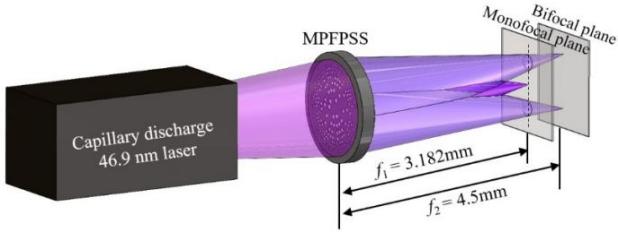Address: No. 92, Xidazhi Street, Nangang District, Harbin



JOIN-USHIT sincerely invite talents from both home and aproad to join in the new course of constructing first-class universities. |
Recently, the research group led by Associate Professor Cui Huaiyu from Professor Zhao Yongpeng's team at the National Key Laboratory of Laser Spatial Information at the School of Astronautics, Harbin Institute of Technology, in collaboration with Associate Researcher Zhang Junyong at the Shanghai Institute of Optics and Fine Mechanics, Chinese Academy of Sciences, has made significant progress in light field modulation from extreme ultraviolet to soft X-ray. The related findings have been published under the title 'Anisotropically multiplanar-focal photon-sieve splitter from extreme ultraviolet to soft X-ray' in the prestigious optics journal, Optica. This achievement expands the means of light field modulation for short-wavelength radiation and holds important application prospects in cutting-edge technological fields such as high-precision imaging and measurement.
Benefiting from its short wavelength and high photon energy, radiation ranging from EUV to soft X-ray serves as a powerful tool for exploring the microcosm in various applications, such as mass spectrometry and high-resolution imaging. However, the strong absorption of materials severely limits the available means of the light field modulation from EUV to soft X-ray. The light field modulation methods commonly used in the visible and infrared bands are almost entirely ineffective in this band, which has seriously hindered the development of the frontier applications.
To address this challenge, the research team innovatively developed a multiplanar anisotropic beam-splitting and focusing method on the diffractive optical element photon-sieve. Moreover, focal spot reconstruction was successfully achieved based on experimental results, with a high degree of consistency between theoretical and dexperimental results. Using a capillary discharge 46.9 nm EUV laser, the researchers successfully demonstrated the generation of three focal spots of equal intensity at both monofocal and bifocal planes from the photon-sieve. Based on experimentally captured data, the focal spot sizes derived to the theoretical focal plane align well with the corresponding theoretical values via autofocus technology, thereby validating the effectiveness and practicality of this short-wavelength light field modulation method. This significant breakthrough is expected to advance the development of integrated extreme ultraviolet optical systems and provide a viable solution for high-precision technologies such as short-wavelength single-shot imaging and interferometric measurements.

Fig. 1 Focusing schematic of multiplanar-focal photon-sieve splitter.

Fig. 2 Atomic force microscopy normalized images of monofocal plane and bifocal planes.
The National Key Laboratory of Laser Spatial Information, Harbin Institute of Technology, is listed as the first affiliation on the paper, with the first author being Cheng Keyang, a doctoral student from doctoral student from the School of Astronautics. Associate Professor Cui Huaiyu and Associate Researcher Zhang Junyong are the co-corresponding authors of the paper. This research was supported by the National Natural Science Foundation of China and the Strategic Priority Research Program of the Chinese Academy of Sciences.
Original article link: https://doi.org/10.1364/OPTICA.559913
一审:宋子畅、沈千舒
二审:陈东萍
三审:董永康